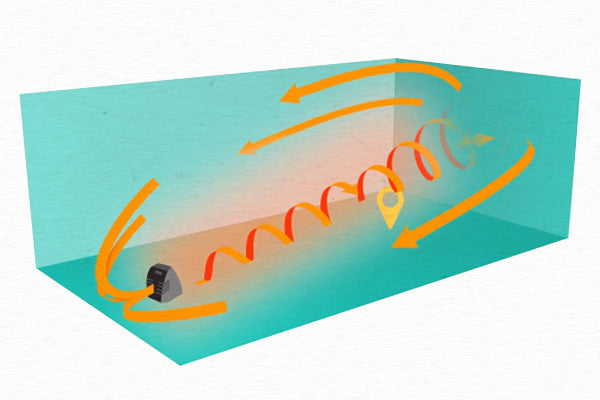
How Heat Circulation Works, and How You Can Help
Vornado AustraliaNow that the colder weather is upon us, it’s time to think heat. Sure, you could rug up with five layers of clothing until you look like the Michelin Man just to stay warm… but it’s your home, and you deserve to be comfy! Having a warm home makes winter something to look forward to, and effective heat circulation means that you’ll be reducing costs and staying sustainable while you do it.
Unfortunately, the average heater doesn’t do a great job of heating a room – especially larger areas like open-plan spaces. If you’re struggling to heat your home in the cold months, then understanding heat circulation can help.
How does heat circulation work?
Most heaters get very hot in the area nearby, but struggle to heat areas that are further away, particularly the far corners of the house. For example, if you’re sitting close to the average heater, you’ll feel intense warmth because of the concentrated beam of infrared energy it radiates – but the rest of the room will still be chilly, meaning that you can’t move around the room easily. In other words, the heat isn’t circulating.
How does Vortex Action air circulation work?
Vornado’s family of whole-room heaters use convection technology, which heats enclosed spaces very well, allowing you to move about without feeling the chill. Convection heating heats the whole room, not just the closest area, and our powerful vortex action air circulation means that you don’t have to wait long for the room to heat up. If you’ve used conventional convection heaters, you may have gotten fed up with how long it takes to heat the room, but Vornado Air Circulators act similar to aircraft jet engines, with a powerful engine turning the deep-pitched blade through the signature Vornado grill and focusing the air into a tight beam, allowing it to travel up to 30.5 metres.
The air flows fast, warm and gentle in a twisting, spiral pattern called Vortex Action. To create a continuous current of warm air throughout the entire room, the Vornado Heater then uses the walls and ceilings as pathways to circulate and re-circulate the heat, leaving the whole room perfectly warm and comfortable.
Want to see it in action? Check out this simple explainer.
What can I do to help the heat circulate in my home?
If you’re running a convection heater has been running for hours but you’re still hiding in a fortress of blankets and quilts, then your house may actually be losing heat. The science behind this is straightforward: warm air contains lower-density molecules which rise above cool air; cool air tends to sink. Warm air also moves more rapidly than cool air, meaning that it will escape your home faster – making it more difficult to heat your home, and more expensive.
To stop that warm air from escaping, adding insulation to your house will make a world of difference. The most important place to start is your attic (since hot air rises!) but don’t stop there – ideally, your entire house should be insulated to prevent heat loss.
Another common culprit of heat loss is doors and windows. You can check how well these are sealed by (carefully) holding a lit candle around the perimeter of each window and exterior door. If the flame flickers, you may have a leak in that area. Self-adhesive draught seal tape, draught arrestors or draught snakes are affordable, effective ways to draught-proof external doors and windows.
According to Sustainability Victoria, making changes to heat your home more efficiently can:
-
Lower your heating costs by up to 40%
-
Create consistent comfortable temperature in your home, and
-
Lower your greenhouse gas emissions.
Furniture is also a potential obstacle to heat circulation – and one that’s often overlooked. Check whether any of your furniture – including rugs and curtains – are directly in the way of the heater, and move them around (or move the heater) to let warm air circulate more comfortably.
While curtains can be an obstacle to heat circulation, thermal curtains can also enable it. These curtains can absorb heat from both outside and inside the house. They also work very well during summer to prevent heat gain – win-win!
We hope you enjoyed this article about how heat circulation works, and we’re proud to offer exceptional heaters to keep you and your family toasty warm in winter. Invest in your comfort and surround yourself in a blanket of warmth with technology that gets heating right, from Vornado.
